Plant-expressed cocaine hydrolase variants of butyrylcholinesterase exhibit altered allosteric effects of cholinesterase activity and increased inhibitor sensitivity
- PMID: 28874829
- PMCID: PMC5585256
- DOI: 10.1038/s41598-017-10571-z
Plant-expressed cocaine hydrolase variants of butyrylcholinesterase exhibit altered allosteric effects of cholinesterase activity and increased inhibitor sensitivity
Erratum in
-
Author Correction: Plant-expressed cocaine hydrolase variants of butyrylcholinesterase exhibit altered allosteric effects of cholinesterase activity and increased inhibitor sensitivity.Sci Rep. 2018 Nov 16;8(1):17223. doi: 10.1038/s41598-018-35441-0. Sci Rep. 2018. PMID: 30443038 Free PMC article.
Abstract
Butyrylcholinesterase (BChE) is an enzyme with broad substrate and ligand specificities and may function as a generalized bioscavenger by binding and/or hydrolyzing various xenobiotic agents and toxicants, many of which target the central and peripheral nervous systems. Variants of BChE were rationally designed to increase the enzyme's ability to hydrolyze the psychoactive enantiomer of cocaine. These variants were cloned, and then expressed using the magnICON transient expression system in plants and their enzymatic properties were investigated. In particular, we explored the effects that these site-directed mutations have over the enzyme kinetics with various substrates of BChE. We further compared the affinity of various anticholinesterases including organophosphorous nerve agents and pesticides toward these BChE variants relative to the wild type enzyme. In addition to serving as a therapy for cocaine addiction-related diseases, enhanced bioscavenging against other harmful agents could add to the practicality and versatility of the plant-derived recombinant enzyme as a multivalent therapeutic.
Conflict of interest statement
K.E.L., L.K., S.B., C.-G.Z. and T.S.M. are listed as inventors in various patents and patent applications relating to various aspects of the presented data.
Figures
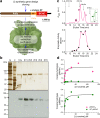
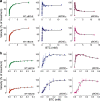
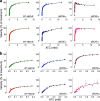
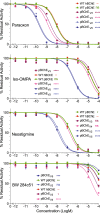

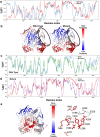
Similar articles
-
An improved cocaine hydrolase: the A328Y mutant of human butyrylcholinesterase is 4-fold more efficient.Mol Pharmacol. 1999 Jan;55(1):83-91. doi: 10.1124/mol.55.1.83. Mol Pharmacol. 1999. PMID: 9882701
-
Plants as a source of butyrylcholinesterase variants designed for enhanced cocaine hydrolase activity.Chem Biol Interact. 2013 Mar 25;203(1):217-20. doi: 10.1016/j.cbi.2012.09.004. Epub 2012 Sep 20. Chem Biol Interact. 2013. PMID: 23000451 Free PMC article.
-
Catalytic activities of a cocaine hydrolase engineered from human butyrylcholinesterase against (+)- and (-)-cocaine.Chem Biol Interact. 2013 Mar 25;203(1):57-62. doi: 10.1016/j.cbi.2012.08.003. Epub 2012 Aug 11. Chem Biol Interact. 2013. PMID: 22917637 Free PMC article.
-
Naturally Occurring Genetic Variants of Human Acetylcholinesterase and Butyrylcholinesterase and Their Potential Impact on the Risk of Toxicity from Cholinesterase Inhibitors.Chem Res Toxicol. 2016 Sep 19;29(9):1381-92. doi: 10.1021/acs.chemrestox.6b00228. Epub 2016 Aug 31. Chem Res Toxicol. 2016. PMID: 27551784 Free PMC article. Review.
-
[Butyrylcholinesterase: 3D structure, catalytic mechanisms].Ann Pharm Fr. 2005 Jun;63(3):194-206. doi: 10.1016/s0003-4509(05)82274-6. Ann Pharm Fr. 2005. PMID: 15976688 Review. French.
Cited by
-
Design of novel cyanovirin-N variants by modulation of binding dynamics through distal mutations.Elife. 2022 Dec 6;11:e67474. doi: 10.7554/eLife.67474. Elife. 2022. PMID: 36472898 Free PMC article.
-
Ancient thioredoxins evolved to modern-day stability-function requirement by altering native state ensemble.Philos Trans R Soc Lond B Biol Sci. 2018 Jun 19;373(1749):20170184. doi: 10.1098/rstb.2017.0184. Philos Trans R Soc Lond B Biol Sci. 2018. PMID: 29735738 Free PMC article.
-
Evidence that the cold- and menthol-sensing functions of the human TRPM8 channel evolved separately.Sci Adv. 2024 Jun 21;10(25):eadm9228. doi: 10.1126/sciadv.adm9228. Epub 2024 Jun 21. Sci Adv. 2024. PMID: 38905339 Free PMC article.
-
Allosteric regulatory control in dihydrofolate reductase is revealed by dynamic asymmetry.Protein Sci. 2023 Aug;32(8):e4700. doi: 10.1002/pro.4700. Protein Sci. 2023. PMID: 37313628 Free PMC article.
-
Engineering gain-of-function mutants of a WW domain by dynamics and structural analysis.Protein Sci. 2023 Sep;32(9):e4759. doi: 10.1002/pro.4759. Protein Sci. 2023. PMID: 37574787 Free PMC article.
References
Publication types
MeSH terms
Substances
Grants and funding
LinkOut - more resources
Full Text Sources
Other Literature Sources
Miscellaneous

